Welcome to Phoenix, Arizona, where the desert heat meets an oasis of astonishing fun facts! This city isn’t just about sweltering temperatures; it’s a vibrant mix of history, culture, and natural beauty that’s as intriguing as its stunning sunsets. Get ready to uncover the fascinating layers that make Phoenix unique.
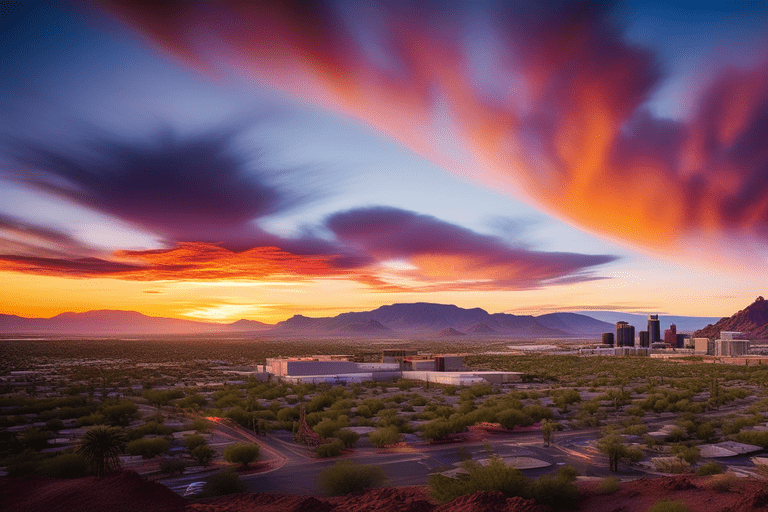
Hold onto your hats because Phoenix isn’t just another big city—it’s the fifth-largest in the U.S.! But here’s the kicker: its roots trace back to ancient times. The Hohokam tribe left behind petroglyphs, offering glimpses into a past that’s part of Phoenix’s diverse cultural heritage.
Here’s the scoop: beyond the towering cacti, Phoenix has surprises up its sleeve. Arts enthusiasts, rejoice! This city hosts the nation’s largest arts festival, showcasing talents from every nook and cranny. And don’t miss the cactus garden—home to a whopping 50,000 plants—a testament to how nature and urban life thrive hand in hand here in Phoenix.
Quick Fun Facts About phoenix Arizona
- Named after the mythical bird symbolizing rebirth.
- 5th most populous U.S. city and the most populous state capital.
- Scorching summers often surpassing 100°F (37.8°C).
- Boasts 300+ days of sunshine annually as “The Valley of the Sun.”
- Home to iconic Saguaro cacti native to the area.
- Papago Park offers trails, fishing, and the Desert Botanical Garden.
- Hosts the vibrant Arizona State Fair annually.
- South Mountain Park is one of the largest urban parks in the U.S.
- Strong Native American influence with tribes like Navajo and Apache.
- Hosts major sports teams like Cardinals, Suns, and Diamondbacks.
- The Heard Museum celebrates Native American art and culture.
- ASU is the largest U.S. public university by enrollment.
- Faces challenges with the urban heat island effect.
- Arizona Capitol Museum showcases the state’s history and politics.
- Spring training for MLB teams happens in Phoenix.
- Sky Harbor Airport serves as a crucial transportation hub.
- Roosevelt Row thrives as an arts district with galleries and street art.
- Played a significant role in citrus cultivation historically.
- Taliesin West by Frank Lloyd Wright is a UNESCO site.
- The Sonoran Desert hosts diverse desert life around Phoenix.
Also Read this: 50 unbelievable Fun Facts about OHIO
Phoenix’s Name Origin
Phoenix, the capital of Arizona, derives its name from the legendary bird of Greek mythology that cyclically regenerates or is reborn. The city embodies this symbolism, representing a modern metropolis that emerged from the remnants of the ancient Hohokam civilization. The Hohokam people constructed an extensive canal system in the area, laying the groundwork for the region’s agricultural viability and inspiring Phoenix’s subsequent development.
Desert Climate
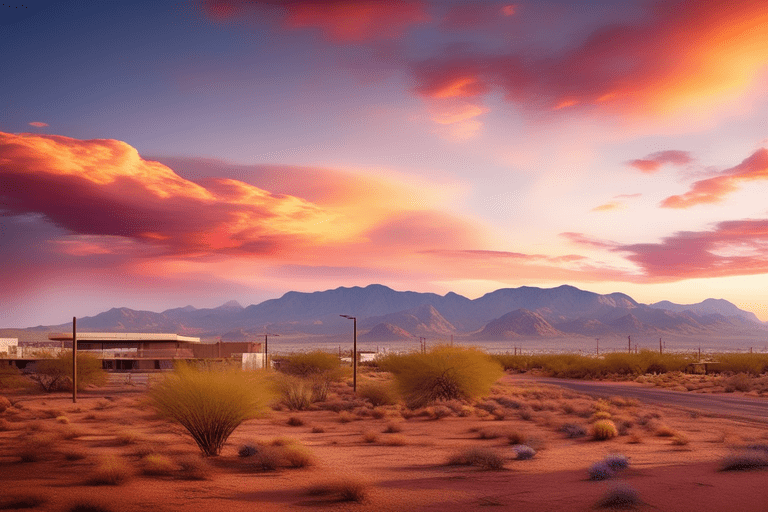
Phoenix experiences an intense desert climate characterized by sweltering summers and mild winters. During the summer months, temperatures routinely surpass 100°F (37.8°C), occasionally climbing even higher. Monsoons in the late summer bring sporadic rainfall and dramatic thunderstorms. Winters offer relief from the extreme heat, with pleasantly warm days and cooler evenings.
The Valley of the Sun
Nestled in the Salt River Valley, Phoenix earned the moniker “The Valley of the Sun” due to its abundant sunshine. The city enjoys over 300 days of sun annually, attracting residents and visitors seeking the warmth and outdoor recreational opportunities year-round.
Fifth Most Populous City
As the fifth most populous city in the United States, Phoenix has experienced remarkable growth. Its thriving economy, diverse job market, and favorable living conditions have magnetized a significant influx of residents, contributing to its status as a bustling urban center.
Cultural Diversity
Phoenix boasts a rich cultural tapestry woven from a vibrant mix of communities. Hispanic, Native American, African American, Asian, and other ethnic groups contribute to the city’s diverse heritage, influencing its art, cuisine, traditions, and festivals.
Saguaro Cactus
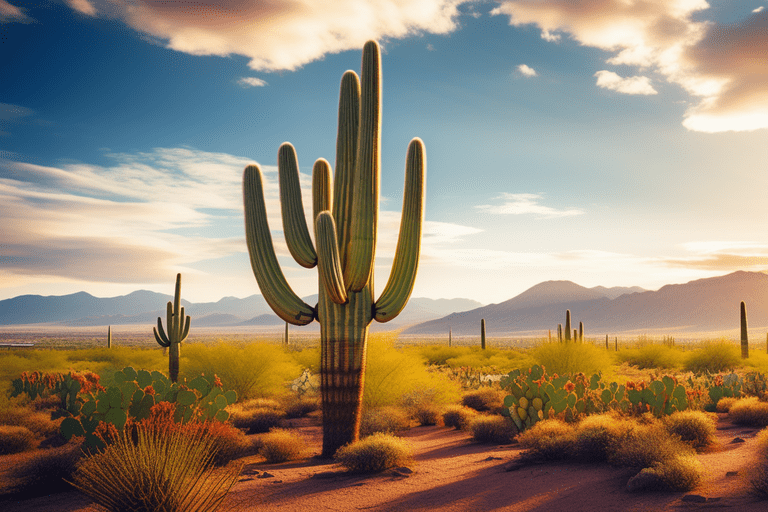
The iconic Saguaro cactus, a symbol of the American West, dominates the desert landscape surrounding Phoenix. These majestic plants, with their towering arms, thrive in the arid climate and play a significant role in the region’s ecological and cultural identity.
Papago Park
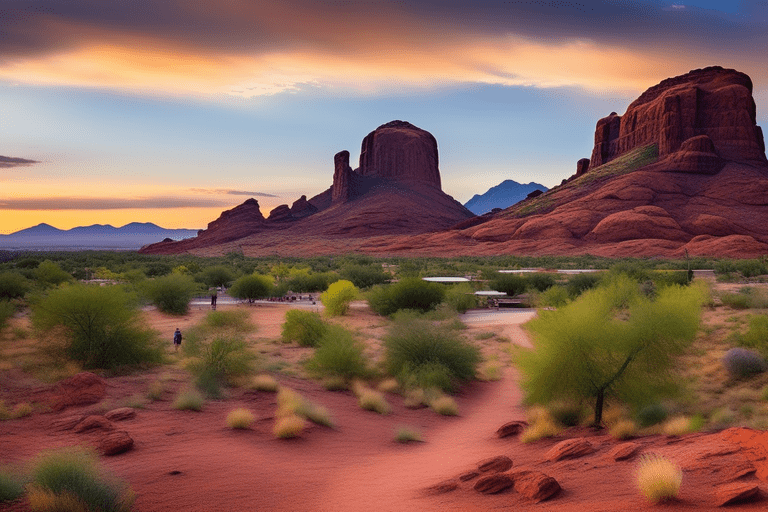
Papago Park stands as an urban recreational oasis, offering an array of outdoor activities. Visitors can explore picturesque hiking trails, fish in tranquil lagoons, and marvel at the Desert Botanical Garden’s stunning collection of desert flora, showcasing the beauty and resilience of arid-land plants.
Arizona State Fair
The annual Arizona State Fair, a beloved tradition in Phoenix, encompasses a carnival-like atmosphere. Attendees revel in live concerts, thrilling rides, livestock exhibitions, and an assortment of delectable treats, creating an immersive experience for all ages.
South Mountain Park
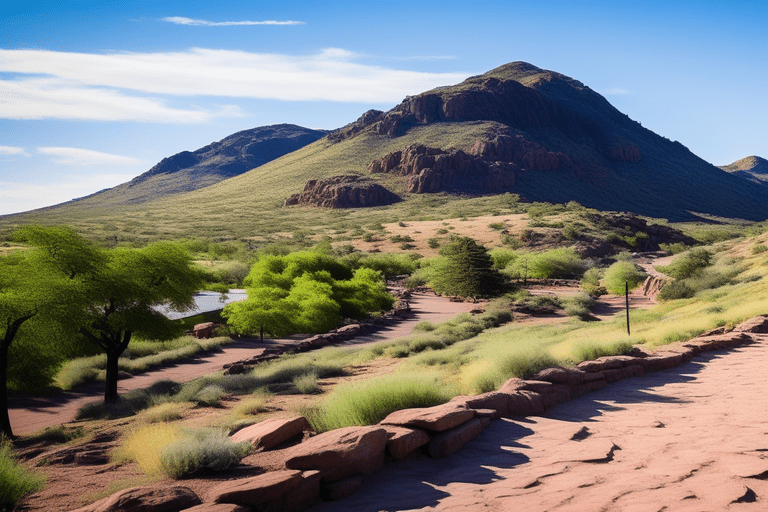
South Mountain Park, one of the largest municipal parks in the nation, sprawls across the city’s southern edge. Its extensive trail system beckons outdoor enthusiasts, providing opportunities for hiking, mountain biking, and unparalleled vistas of the cityscape.
Native American Influence
Phoenix cherishes and honors its deep Native American roots, with tribes like the Navajo, Hopi, Apache, and others playing an integral role in shaping the city’s cultural mosaic. Their traditions, art, and customs contribute significantly to Phoenix’s identity.
Professional Sports Teams
The city boasts a fervent sports culture, home to professional teams like the Arizona Cardinals (NFL), Phoenix Suns (NBA), Arizona Diamondbacks (MLB), and Arizona Coyotes (NHL). These teams not only entertain but also unite the community in their passion for sports.
Heard Museum
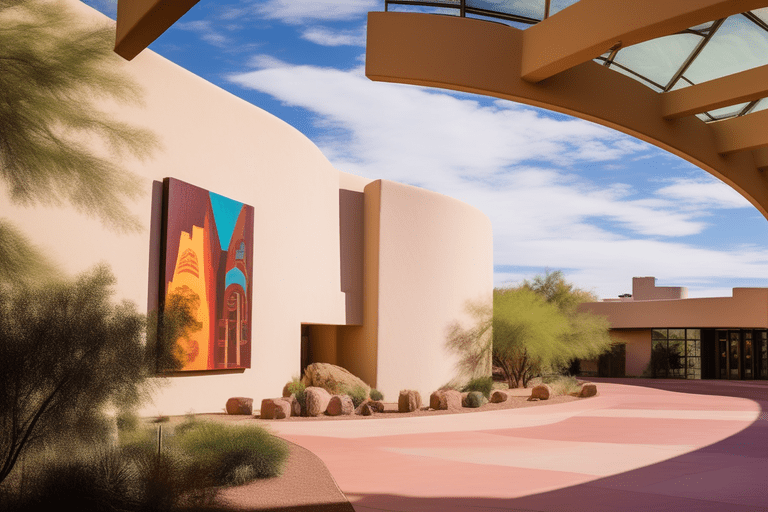
The Heard Museum stands as a beacon of Native American art and culture in Phoenix. Its extensive collection showcases traditional artifacts, contemporary artwork, and immersive exhibits, offering visitors a deeper understanding of indigenous heritage and artistic expression.
Arizona State University (ASU)

Arizona State University (ASU), the largest public university in the U.S. by enrollment, contributes significantly to Phoenix’s intellectual vibrancy. ASU offers a wide array of academic disciplines, research opportunities, and cultural events that enrich the city’s academic landscape.
Urban Heat Island Effect
Phoenix grapples with the urban heat island effect, a phenomenon characterized by higher temperatures in urban areas compared to their rural surroundings. Vast expanses of concrete and asphalt exacerbate this effect, impacting the city’s climate and necessitating innovative urban planning solutions.
Arizona Capitol Museum
Located within the historic Capitol building, the Arizona Capitol Museum preserves the state’s political history, showcasing artifacts, documents, and exhibitions that highlight Arizona’s government, heritage, and architectural significance.
Spring Training Baseball
Each spring, Phoenix becomes a focal point for Major League Baseball’s spring training. Baseball aficionados flock to the area to witness preseason games featuring various teams, creating a festive atmosphere for fans.
Sky Harbor International Airport
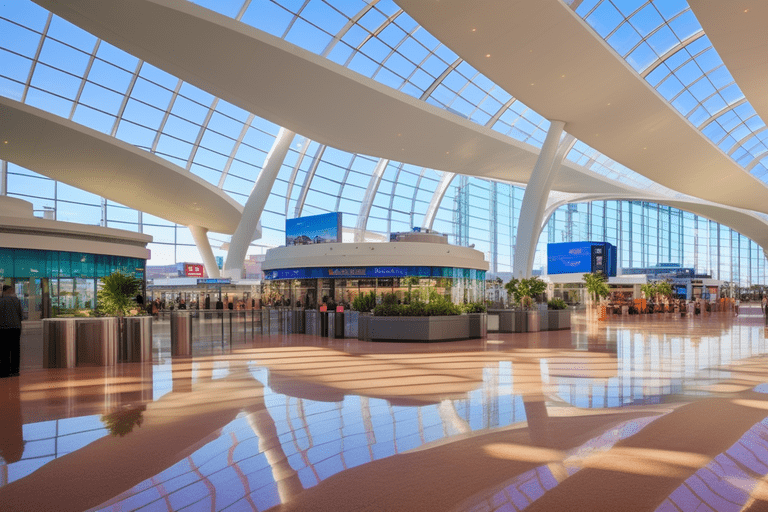
Sky Harbor International Airport serves as a pivotal transportation hub, connecting Phoenix to domestic and international destinations. Its strategic location and modern facilities make it one of the busiest airports in the United States.
Roosevelt Row
Roosevelt Row, an eclectic arts district in downtown Phoenix, pulsates with creative energy. Galleries, vibrant street art, cultural events, and locally-owned businesses converge here, fostering a dynamic and avant-garde atmosphere.
Agricultural Importance
Phoenix’s agricultural heritage, particularly in citrus cultivation, played a crucial role in its development. The region’s fertile soil and irrigation systems supported extensive citrus groves, establishing the city as a hub for citrus production.
Taliesin West
Taliesin West, designed by the legendary architect Frank Lloyd Wright, serves as both a UNESCO World Heritage Site and a school of architecture. Its innovative design, nestled within the desert landscape, reflects Wright’s architectural philosophy and vision.
Phoenix Zoo

The Phoenix Zoo, home to over 3,000 animals representing diverse species, focuses on conservation and education. Visitors can explore exhibits and participate in programs aimed at promoting wildlife preservation.
Camelback Mountain
Camelback Mountain, a prominent natural landmark, offers challenging trails for hiking enthusiasts. Scaling its summit rewards adventurers with breathtaking panoramic views of the Phoenix skyline and the surrounding Sonoran Desert.
Cultural Festivals
Phoenix hosts an array of cultural festivals throughout the year, celebrating the diverse heritages within the city. Events like the Chinese Culture and Cuisine Festival, Greek Festival, and many others showcase traditions, cuisine, music, and arts from various cultures, fostering cross-cultural appreciation and understanding among the community.
Water Conservation Efforts
Given its arid environment, Phoenix places significant emphasis on water conservation. Innovative water management strategies, including reclaimed water usage, xeriscaping, and public awareness campaigns, aim to mitigate water scarcity issues and promote sustainable water usage.
Historic Heritage Square
Preserving the charm of yesteryears, Historic Heritage Square features well-preserved Victorian-era homes and buildings. It serves as a historical treasure, offering insights into Phoenix’s early development and architectural heritage.
City Growth Challenges
The rapid urbanization and population growth in Phoenix present challenges such as urban sprawl, traffic congestion, and strain on natural resources. Sustainable urban planning initiatives and efforts to balance growth with environmental conservation are ongoing priorities for the city.
Arizona Science Center
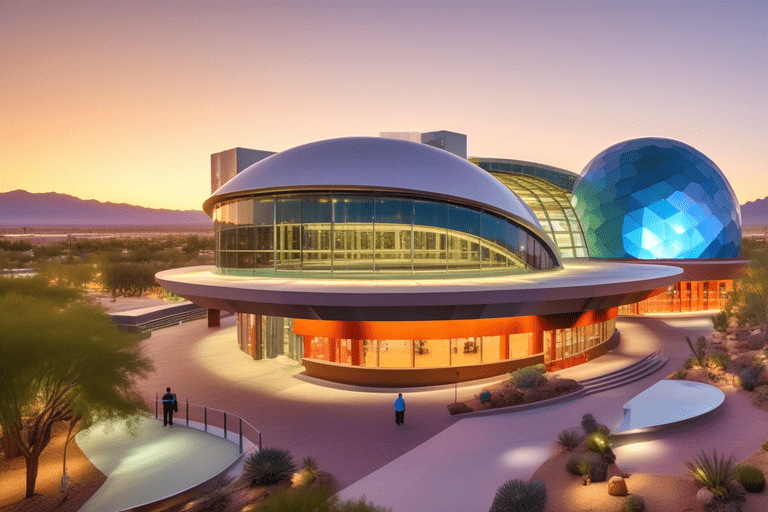
The Arizona Science Center ignites curiosity and learning through interactive exhibits, hands-on activities, and engaging programs. Catering to visitors of all ages, the center inspires a passion for science, technology, engineering, and mathematics (STEM) education.
Annual Hot Air Balloon Festival
The Phoenix area hosts an annual Hot Air Balloon Festival, a mesmerizing event where colorful balloons fill the sky against the backdrop of the stunning Sonoran Desert landscape. The festival offers breathtaking sights and exhilarating experiences for attendees.
Phoenix Art Museum
The Phoenix Art Museum houses an extensive collection of art spanning diverse cultures and periods. Its exhibits showcase American, Asian, European, Latin American art, and contemporary works, providing enriching cultural experiences for art enthusiasts.
Sonoran Desert
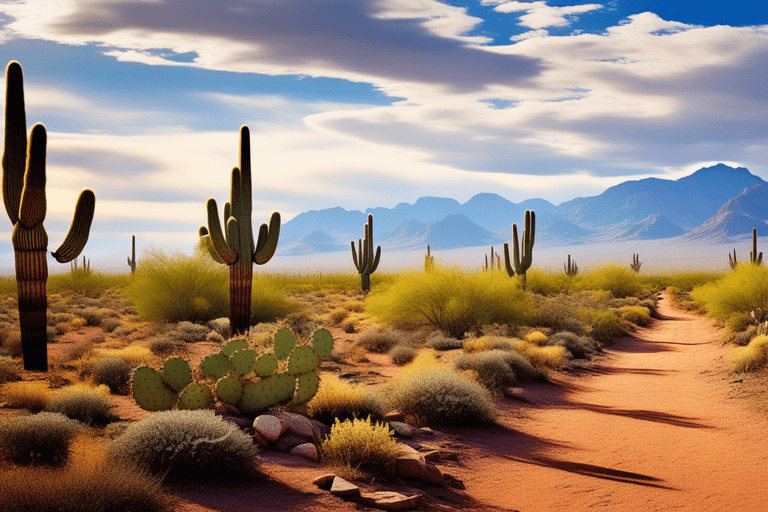
Phoenix lies within the captivating Sonoran Desert, renowned for its unique ecosystem and biodiversity. Apart from the majestic Saguaro cacti, the desert boasts diverse plant and animal species specially adapted to survive in arid environments, making it a captivating natural wonder.
FAQ’s
Phoenix earned the nickname due to its location in the Salt River Valley and abundant sunshine, boasting over 300 sunny days annually.
The Saguaro cactus is iconic, symbolizing the American Southwest and thriving in Phoenix’s desert climate, growing tall and living for many years.
Papago Park offers hiking trails, fishing spots, and the Desert Botanical Garden, showcasing diverse desert plants, attracting nature lovers.
Phoenix copes with high temperatures through cooling centers, water conservation, safety campaigns, and promoting energy-efficient practices.
Phoenix boasts the Heard Museum, showcasing Native American art, the Arizona Capitol Museum highlighting state history, and Historic Heritage Square preserving Victorian-era architecture.